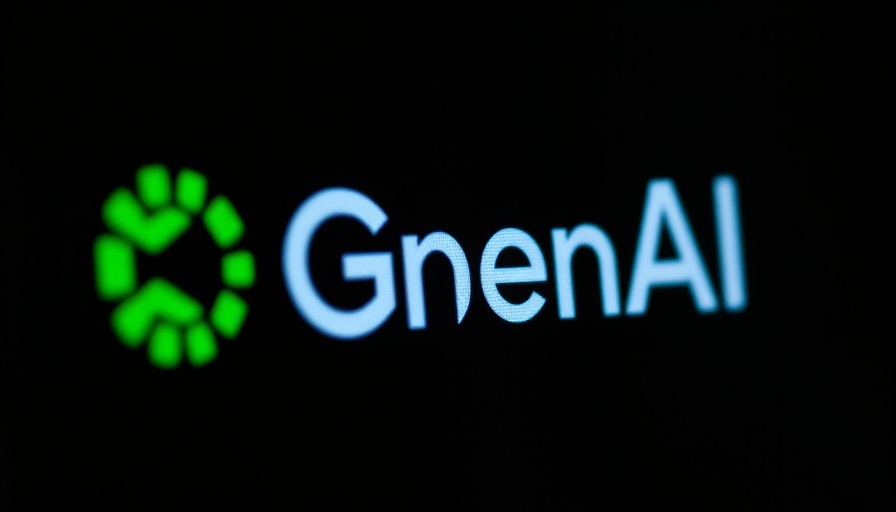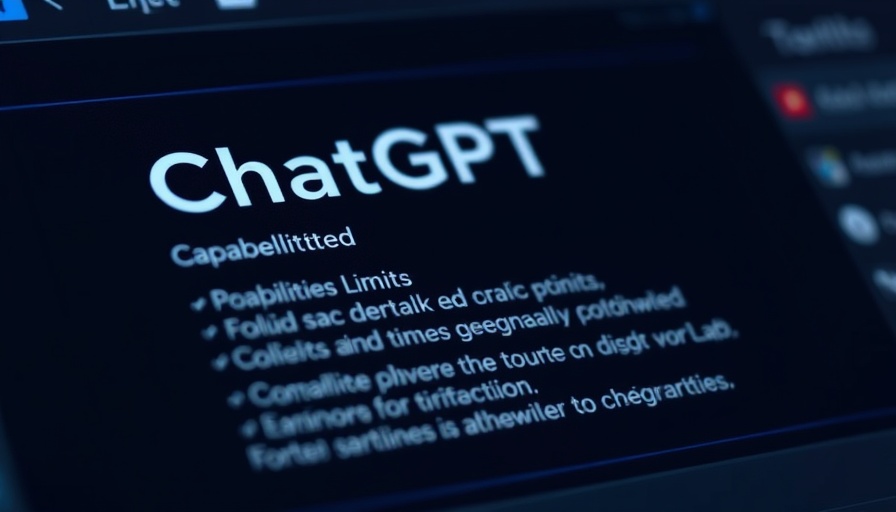
The Rise of DeepSeek-R1: A Game-Changer in AI Reasoning
The introduction of DeepSeek-R1 has stirred a wave of excitement among AI enthusiasts and researchers alike. This groundbreaking model from the Chinese AI company DeepSeek is being hailed for its remarkable ability to tackle complex reasoning tasks. With a stunning 74% of output mirroring OpenAI’s design, DeepSeek-R1 has proven its mettle in a highly competitive landscape. Let’s explore what makes this model unique and why it's generating so much buzz.
Understanding DeepSeek: A Brief Overview
DeepSeek, founded in 2023, is committed to developing Artificial General Intelligence (AGI) through open-source initiatives. Their R1 model, launched in January 2025, builds on the foundation laid by R1-Zero, which was trained entirely on reinforcement learning. This model not only challenges existing paradigms regarding AI training but also signals a significant shift in the AI landscape, paralleling OpenAI's initiatives.
How DeepSeek-R1 Compares to OpenAI’s Models
DeepSeek-R1’s performance metrics have put it toe-to-toe with OpenAI’s latest offerings. For instance, its 79.8% Pass@1 score on the AIME 2024 benchmark highlights its prowess in reasoning tasks, while its efficiency in processing through its Mixture of Experts architecture allows it to operate cost-effectively. Unlike traditional models that might require extensive resources, DeepSeek-R1 utilized approximately $5.6 million and just 2,000 Nvidia GPUs for its development.
Innovative Training Techniques: Reinforcement Learning Takes Center Stage
One of the standout features of DeepSeek-R1 is its unique training methodology. Incorporating a multi-stage training process, which begins with supervised fine-tuning, allows the model to develop exceptional reasoning capabilities. This is complemented by reinforcement learning, which has been integral in nurturing self-correcting behaviors and deeper reasoning chains, enhancing the model’s overall output quality.
The Cost of Innovation: A Major Consideration
One of the most compelling aspects of DeepSeek-R1 is its cost-effectiveness. Operating at roughly $8 per million tokens, it offers a more economical alternative to existing models like OpenAI’s offerings. This lower cost is crucial for academic institutions and startups, thereby democratizing access to cutting-edge AI technology.
Open-Source Revolution: Implications for AI Development
By releasing DeepSeek-R1 under an MIT license, the company opens doors for further research and innovation within the AI community. This accessibility contrasts sharply with the typically restrictive nature of major tech companies, fostering a collaborative environment that is likely to accelerate advancements in AI.
Addressing Challenges: The Road Ahead for DeepSeek-R1
Despite its impressive capabilities, DeepSeek-R1 does not come without challenges. Its occasional issues with language mixing, particularly with English and Chinese outputs, indicate that further refinement is needed. The ongoing development efforts aim to address these concerns, ensuring the model becomes even more robust and coherent for users.
The Future of AI: What Lies Ahead?
As DeepSeek-R1 continues to gain traction in the AI community, its influence can set a precedent for future developments in the field. This model demonstrates how open-source solutions can lead to competitive advancements that challenge existing power dynamics in AI technology. Researchers, developers, and enthusiasts should keep a close eye on DeepSeek’s progress, as it may reshape industry standards.
Conclusion: DeepSeek-R1 represents more than just a new AI model; it symbolizes the potential of open-source innovation in a rapidly evolving field. For AI enthusiasts looking to engage with cutting-edge technology, now is the time to explore the capabilities and implications of DeepSeek-R1. Don't delay – delve into the realm of AI and join the conversation about the future of reasoning models!
 Add Row
Add Row  Add
Add 




 Add Row
Add Row  Add
Add 

Write A Comment